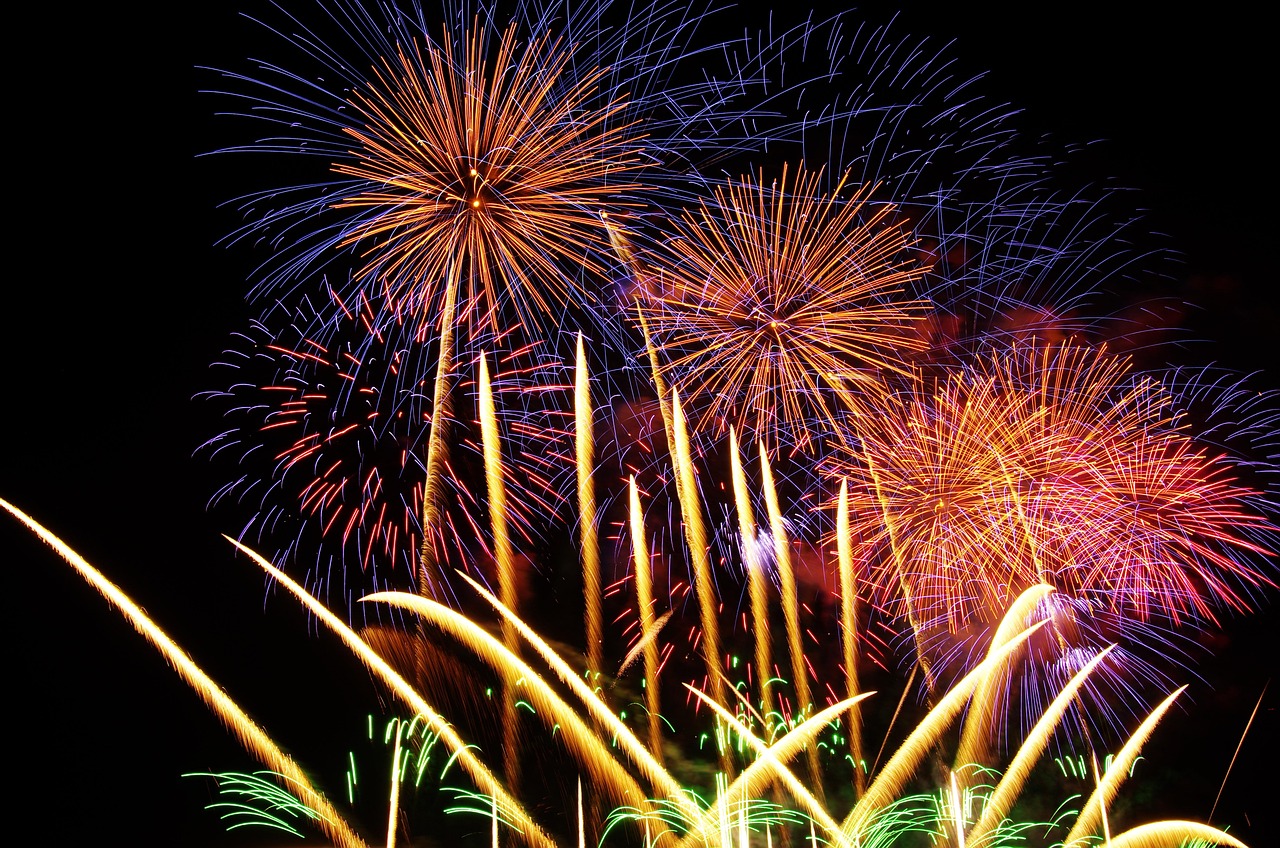
Explosions in the sky
How do you photograph an explosion? Well, when it comes to a fireworks display, it takes a lot of planning and anticipation of what you are going to need. Despite the fact that a fireworks display is a pre-planned event, that spectacular moment when the fireworks explode in the sky is still a split second when everything has to work just right for you to get the perfect shot.
Now, of course, there are some equipment issues that need to be prepared to ensure that your camera is not only set up and ready, but has the right settings to capture that moment when all the glory breaks loose in the sky. So from an equipment standpoint...
- A tripod. The activity of the fireworks is so dramatic that if you do not stabilise your camera, the shot will be blurry and unacceptable to you and whoever you are trying to sell it to. The tripod should be easily transportable and adjustable so that you can make adjustments on the fly.
- An external shutter release.
- Equipment for working at night, as that is when your subject will appear. A head torch is available from any camping store, so you can shine the light on your camera and still have both hands free to operate your equipment.
- A portable chair, as you will be waiting. Anything else that will help you get through the wait, such as food, water, music, etc., should also be part of your preparations.
Because the explosion of the fireworks is sudden and fast, you need to be able to adjust the shutter speed and have the camera set to respond to manual focus, so that you can use your eyes and ears to know exactly when to take the shot.
The key to a great fireworks shot, or a series of great fireworks shots, is location. You want a location that has an excellent view of the part of the sky where most of the action will take place. This means you may need to get a position on a bridge, on top of a building or on top of a hill, away from the crowds of people watching the show. This will not be easy to find, so start early. It is not out of place to "scout" your location days in advance and arrive hours before to secure that spot as your own.
Experience will be one of your best teachers, not only as to the right location, but also how to set your camera focus and shutter speeds, and how to position the view from the secured location so that you can capture the rocket at the moment of explosion. So find ways to get some practice shots at other fireworks displays before you set out to get the "keeper" shot. Minor league baseball clubs often have fireworks displays and will be happy to let you photograph the show in exchange for a few free shots. This is a good place to experiment and get your bearings before setting up for a bigger show.
Once the show starts, anticipate the explosion you want to capture. Don't shoot the first five minutes of the show, but use this time to make sure you've scouted the right spot in the sky. The best times to take the shot are just before the explosion, which you can time by the sound of the rocket going up and the expected time before the eruption.
With experience, you will develop a sixth sense of where and when to get the perfect shot, and when you are finished, you will have some spectacular shots to add to your portfolio or display proudly. And that will lead to even more work photographing explosions in the sky.